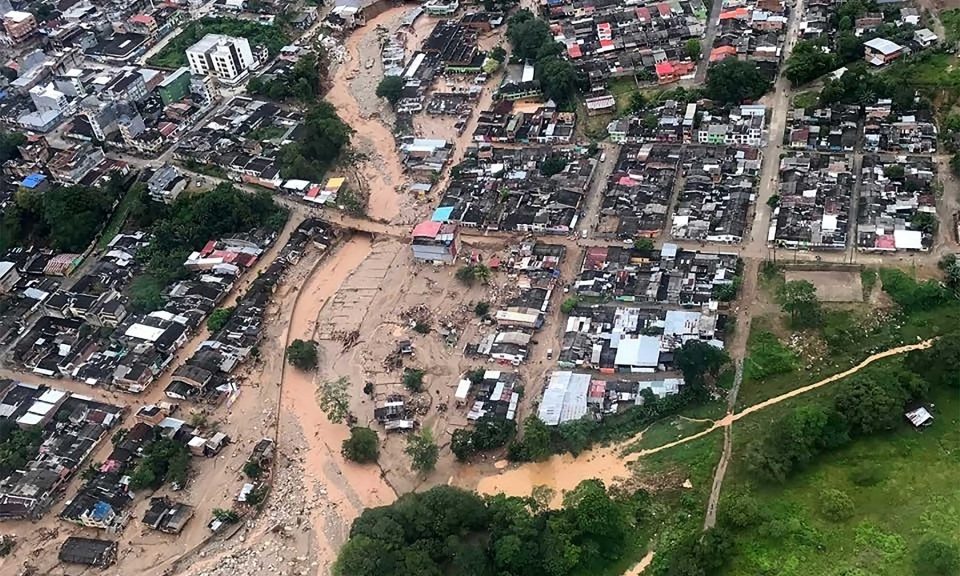Our regular roundup of the country’s COVID-19 cases.
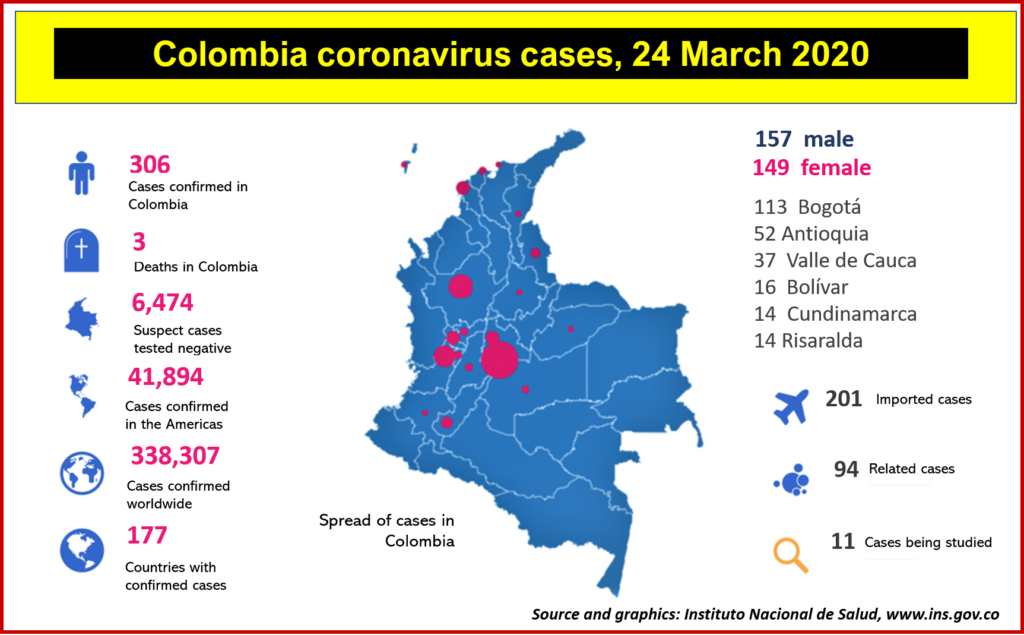
Key events since our last Colombia coronavirus update:
- Now three COVID-19 deaths, in Cali, Santa Marta and Cartagena
- 66 new cases in 24 hours, taking the total to 306. The virus is spreading faster.
- Most infections still in age range of 20 to 29 years.
- 19 departments now affected, including Isla San Andrés
Based on coronavirus data to the end of day March 23 in Colombia, the virus has spread into new regions of the country, including the remote island of San Andrés. Bogotá (113) and key departments of Antioquia (52) and Valle de Cauca (37) have the most cases, according to the latest data from the Instituto Nacional de Salud (INS).
Read our full coverage of the coronavirus outbreak in Colombia
Worldwide, Colombia ranks 43rd in terms of numbers with 306 cases. Biggest rises are currently in US and Europe, with the WHO warning of an alarming spike with 100,000 new infections reported globally in the last four days.
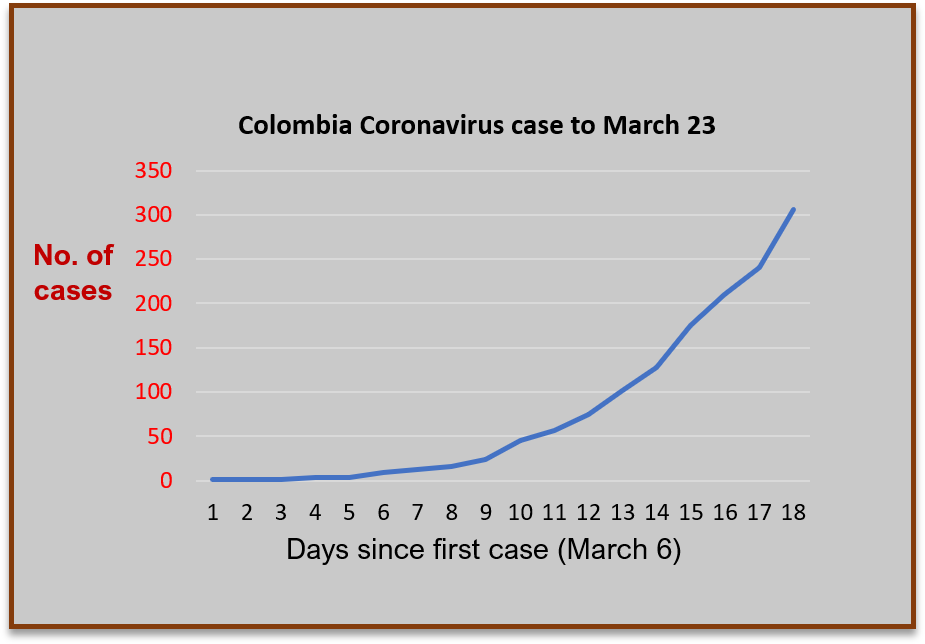
Most cases are still imported from people arriving from overseas, with 201 out of the 306. There are now 15 cases ‘under study’, which means the health authorities have yet to find a link to an imported case. This suggests that community spreading could be taking place.
Coronavirus leaves tourists stranded in Colombia
One good sign is that most cases are being reported in younger people who are more resilient to the effects of the disease, and with only seven cases reported in the over-80s, those most vulnerable.
Of the total 306 cases, 19 are hospitalized, six have recovered, three have died and the rest are being treated at home.
Colombia: a timely nationwide lock-down could keep us safe
Colombia has been an early adopter of lockdowns and today enters a national quarantine until at least April 13, with strict movement restrictions across the country designed to reduce community spreading of the virus.
In this report, we compare stats until March 23 for Colombia with Italy and the UK, which both recorded their first cases on January 31, though the spread in the UK has been much slower. To date:
- Italy has recorded 64,000 cases and 6,078 deaths.
- UK has recorded 6,650 cases and 335 deaths.
But the death rate in Italy is now slightly slowing after enforced lockdowns the last two weeks. These will only start to show effects now because of the week-long incubation period of the virus. This slight shift in the right direction suggests that lock-downs work.
- Italy started its lockdown on March 9, after 39 days, with 9,000 cases and 463 deaths.
- UK started its lockdown on March 23, after 53 days, with 6,650 cases and 335 deaths.
- Colombia has much of its lockdown on March 23, after 277 cases and three deaths.
Colombia’s quarantine 101: everything you need to know
If the benefits of the lockdown only show after two weeks – as seems to be the case in Italy – we can expect both the UK and Colombia to see a small drop in the daily increase in cases and deaths in 14 days, which is April 5.
If we plot Colombia and the UK on the same curve as Italy, then:
- By April 5, Colombia on the same curve could reach 9,000 cases and 360 deaths in a worst case scenario.
- By April 5, the UK on the same curve could reach 64,000 cases and 6,000 deaths in a worst case scenario.
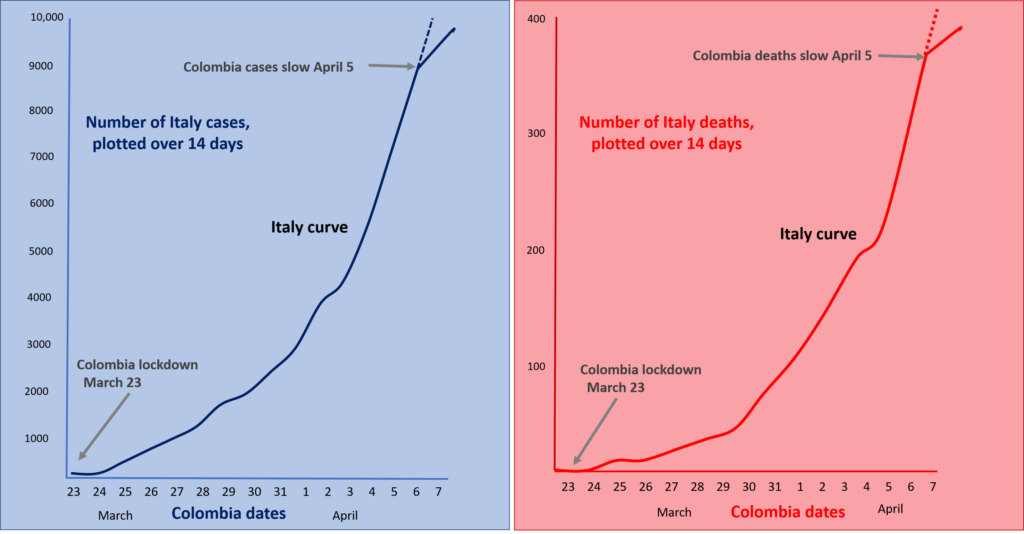
If the lockdown has been effective, the cases and deaths will start to drop after 14 days. In fact, since some populated areas of Colombia have already been in quarantine for five days, such as Bogotá, the daily increase in Colombia cases might start to slow by April 1.
Of course, there are many other factors involved in how the virus will spread, and the number of deaths can be heavily influenced by the quality of health care; numbers of ventilators and trained staff can make or break the response.
Another big factor is testing, only 7,000 in the last month despite a national capacity of several thousand a day. Are there are many more unreported cases out there? Or the health authorities are only looking at a narrow range of import cases and their friends and family? A leap in testing will also mean a leap in case numbers.
But despite these unknown factors, this crude analysis shows how important an early lockdown is to protect Colombia. It also suggests that Italy and the UK were very late to implement strict isolation measures.
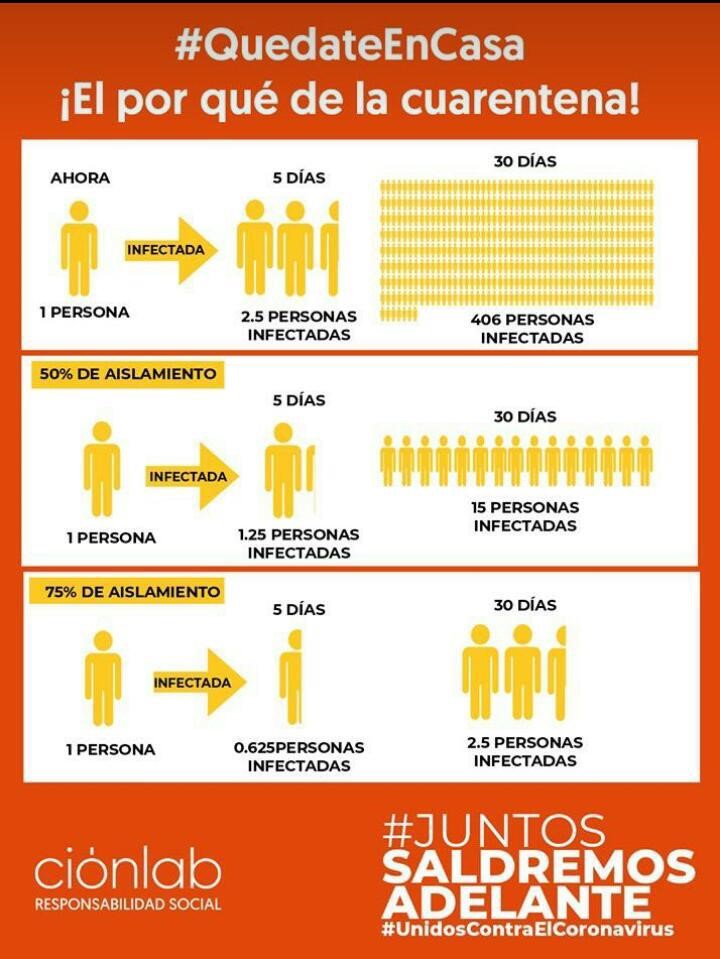
Could hot climates slow the virus?
A new scientific study reported in the UK’s Daily Mail suggests that the COVID-19 virus cannot survive easily in hot humid climates. There is still spread, but slower. This could explain why the fastest outbreaks have been taking place in the cooler spring climates of the US, Spain and northern Italy.
Will hot sweaty weather protect Colombia with a slower spread of the virus? Clearly cooler Andean cities will face the same conditions as fast-spreading countries, but the country’s vast lowland areas might see a less aggressive rise in coronavirus cases.

Initiatives to mitigate the outbreak
Colombia’s isolation plan should slow the outbreak, buying vital time for fragile health services. Mitigation strategies are also important: the ability for medics to save the lives of those infected. In the last four days the WHO has issued calls to countries around the globe to help test some promising cures for COVID-19, including exiting drugs already being trialled to save lives. Vaccines are also in the pipeline.
Home-grown response here announced during the last few days are:
- Repurposing of large spaces such as Corferias conference centre, and cargo ships off the coast, as emergency hospitals.
- Military and police hospitals and health units ready to receive cases.
- Engineering whizz kids at Medellin’s Escuela de Ingeniería de Antioquia designing a mechanical ventilator – essential kit to save lives of severe patients – that can be rolled out locally at a tenth of the cost of imported gear.
The Bogotá Post will bring you more details as they come in. Check our site for more coronavirus case updates. We’ll keep you posted.


